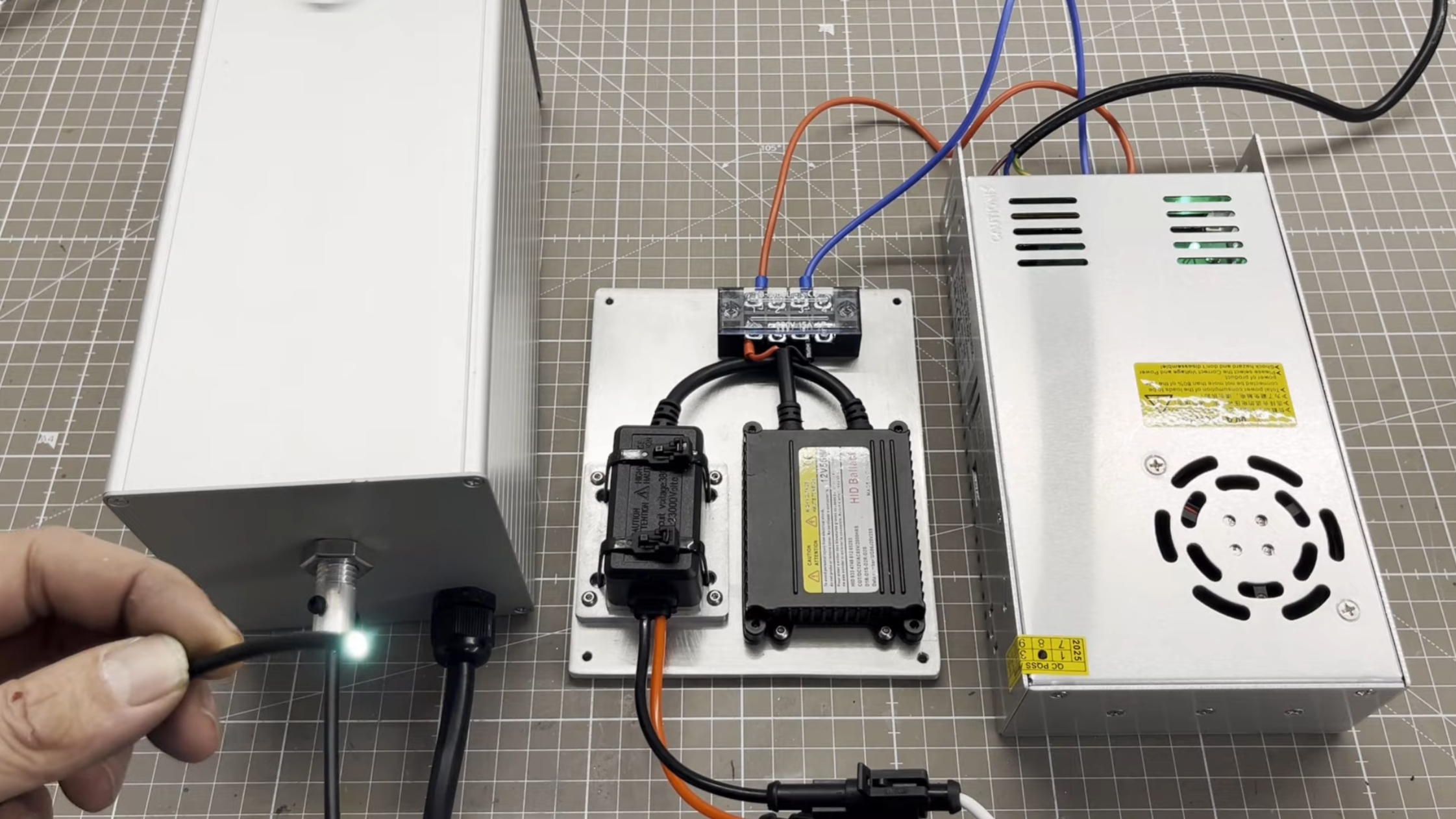Science
Innovator Builds Versatile Xenon Lamp for Spectroscopy

A new light source for spectroscopy has been developed by an innovator known as Markus Bindhammer. In his latest video, he demonstrates the construction of a xenon lamp that promises to enhance the accuracy and versatility of spectrometric measurements. This development highlights the potential for hobbyists and professionals alike to utilize a more effective calibration method for identifying wavelengths.
Before any spectrometer can effectively analyze light, it must undergo calibration. This process typically involves detecting distinctive peaks or troughs from a known light source to establish a reference for subsequent measurements. While many hobbyists rely on the peaks produced by a mercury-vapor fluorescent light, a xenon bulb offers a broader and more adaptable range of wavelengths. The xenon gas discharge not only covers a wide band of wavelengths but also emits several characteristic spikes in the infrared spectrum, making it particularly valuable for absorbance spectroscopy.
In his project, Markus Bindhammer employed an H7 xenon bulb, commonly used in vehicle headlights, as the core of his light source. The design features a concave mirror positioned behind the bulb, which helps to reflect and focus the emitted light. Two converging lenses are placed in front of the bulb to direct the light onto the end of an optical cable made of PMMA, enhancing the transmission of ultraviolet light. The entire assembly is secured with aluminum brackets, ensuring stability and alignment.
The concave mirror in the setup is crafted from a section of aluminum pipe that has been cut open, demonstrating both creativity and resourcefulness in the construction process. To protect the internal components from stray light, a light trap is fitted over the fan outlet, which also aids in cooling the system. The complete setup is housed within an aluminum case, emphasizing durability and portability.
While Markus Bindhammer has yet to test this new light source with his unique spectrometer, initial assessments suggest it should perform effectively. The project not only showcases innovative techniques for amateur scientists but also underscores the need to explore commercial scientific light sources for broader applications.
This development stands as a testament to the growing interest and capability within the amateur scientific community, encouraging further exploration and experimentation in the field of spectroscopy. As enthusiasts like Markus continue to push the boundaries of home-built scientific equipment, the potential for advancements in measurement accuracy and versatility increases significantly.
-

 Top Stories1 week ago
Top Stories1 week agoMarc Buoniconti’s Legacy: 40 Years Later, Lives Transformed
-

 Sports3 weeks ago
Sports3 weeks agoSteve Kerr Supports Jonathan Kuminga After Ejection in Preseason Game
-

 Politics3 weeks ago
Politics3 weeks agoDallin H. Oaks Assumes Leadership of Latter-day Saints Church
-

 Science3 weeks ago
Science3 weeks agoChicago’s Viral ‘Rat Hole’ Likely Created by Squirrel, Study Reveals
-

 Business3 weeks ago
Business3 weeks agoTyler Technologies Set to Reveal Q3 2025 Earnings on October 22
-

 Lifestyle3 weeks ago
Lifestyle3 weeks agoKelsea Ballerini Launches ‘Burn the Baggage’ Candle with Ranger Station
-

 Lifestyle3 weeks ago
Lifestyle3 weeks agoDua Lipa Celebrates Passing GCSE Spanish During World Tour
-

 Health3 weeks ago
Health3 weeks agoRichard Feldman Urges Ban on Menthol in Cigarettes and Vapes
-

 Entertainment3 weeks ago
Entertainment3 weeks agoZoe Saldana Advocates for James Cameron’s Avatar Documentary
-

 Sports3 weeks ago
Sports3 weeks agoPatriots Dominate Picks as Raiders Fall in Season Opener
-

 Health3 weeks ago
Health3 weeks agoCommunity Unites for Seventh Annual Mental Health Awareness Walk
-

 Business3 weeks ago
Business3 weeks agoMLB Qualifying Offer Jumps to $22.02 Million for 2024








